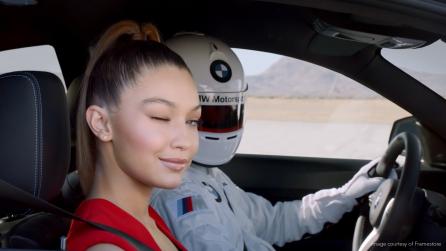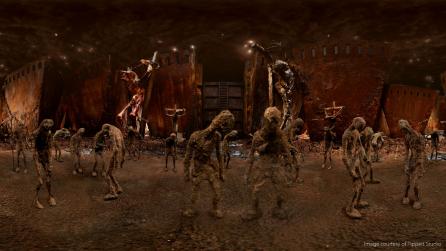What they don't tell you about 360° VR production
They say there’s a first time for everything, so I figured I’d give it a go: working on my first ever VR production, that is. To say that it was an enlightening experience is an understatement. Going in, you don’t even know what you don’t know.
I’m a research engineer at Foundry, and I’m currently looking into how we can solve some of the challenges presented by VR with creative software. In an effort to understand the challenges our customers are facing first hand, I helped out on a production with Radical Plans, who had been engaged to create a VR experience for an LA-based hotel chain.
Since we were all new to this, we started off by doing some test shoots, experimenting with stereoscopic 180° video using two Kodak cameras paired together with auto-sync, before deciding on a 360° rig constructed from six GoPros taped together. Here’s what I found out:
Key takeaway
Shooting 360° VR is not just slightly different from a standard shoot, it’s completely different. The success and cost-effectiveness of the project completely depend on the planning. Our first two days’ shooting ended up on the cutting room floor. That’s OK, it’s a learning curve, and we started at the bottom.
Directing the action
For directors, who are used to working within a defined pyramidal volume from a single camera’s viewpoint, VR presents particular challenges. There is nowhere to hide—every single part of the room is in view, all the time. That means, among other things, that the director can’t be in the room themselves, and must trust their actors to carry out their instructions without being able to directly observe them. It also means, of course, that controlling the story is very difficult. There are no frame borders to guide viewer's attention, and there’ll be less of an opportunity to edit after the fact. This means that they have to rely on acting more to convey their vision. The dynamic between the director and the actor is more akin to theater.
Acting naturally
Actors are challenged by the constrictions of the space they find themselves in. While the camera is everywhere, the areas where cameras overlap create seams, and the actors need to avoid crossing one of these seams, especially in close-up; this requires that they understand the geometry of the shoot and have an incredible spatial awareness. What’s more, they have to do all of this without the help of the director, who, as we mentioned, must be out of the room. It’s down to them to understand the director’s creative intent and carry it through.
Handling the technology
When shooting VR, you have to constantly consider the technology. Capture hardware is still evolving. For example, you need to consider that there’s a lot of heat coming out of a GoPro; with six of them taped together, that’s a whole lot more heat … and that can cause a unit to shut down. You might think that’s not so bad, but consider the fact that there’s no actual cameraman in the room. You could be filming for ten minutes and no-one’s noticed that one of the cameras is off—start over. So don’t forget to pack some nice cooling fans! And remember, you can’t just preview the rushes right there on set. It takes time to download all of that data from six different cameras.
Understanding the space
Space is a critical component of VR shoots. Since everything is in view all of the time, and there are seams between the cameras, you have be very careful about the placement of everything: actors, props, furniture … you have to draw invisible lines in space and remember where they are in your head. Oh yes, did I mention that of course you can’t have standard lighting rigs, for obvious reasons? So you have to use practicals: lamps that look in place, windows with natural light, that sort of thing. And unless you’ve got a very high-end camera, that kind of lighting is going to lead to noise—lots of noise.
Putting it all together
This is where I came in. What’s the most important thing you need to know about VR post-production? Take your most pessimistic estimates of how long it’s going to take, then triple them. If you want to achieve cinematic quality with no artifacts around the seams, it’s going to be expensive, and it’s going to take time. Many projects fail at the post-production stage because of this. Fortunately, new tools like Cara VR™ are emerging to help out in that arena, and for people who are already trying to get this done, they can’t come too soon.
Summing up
Cinematic-quality VR production is not easy, but the more we understand the different approaches we need to take, and the requirement to plan accordingly upfront, the easier it will become. At the same time, advances in hardware and software are beginning to solve some of the challenges. So take a deep breath, grit your teeth and come on it. The results are worth it.
Want to create VR experiences yourself?

